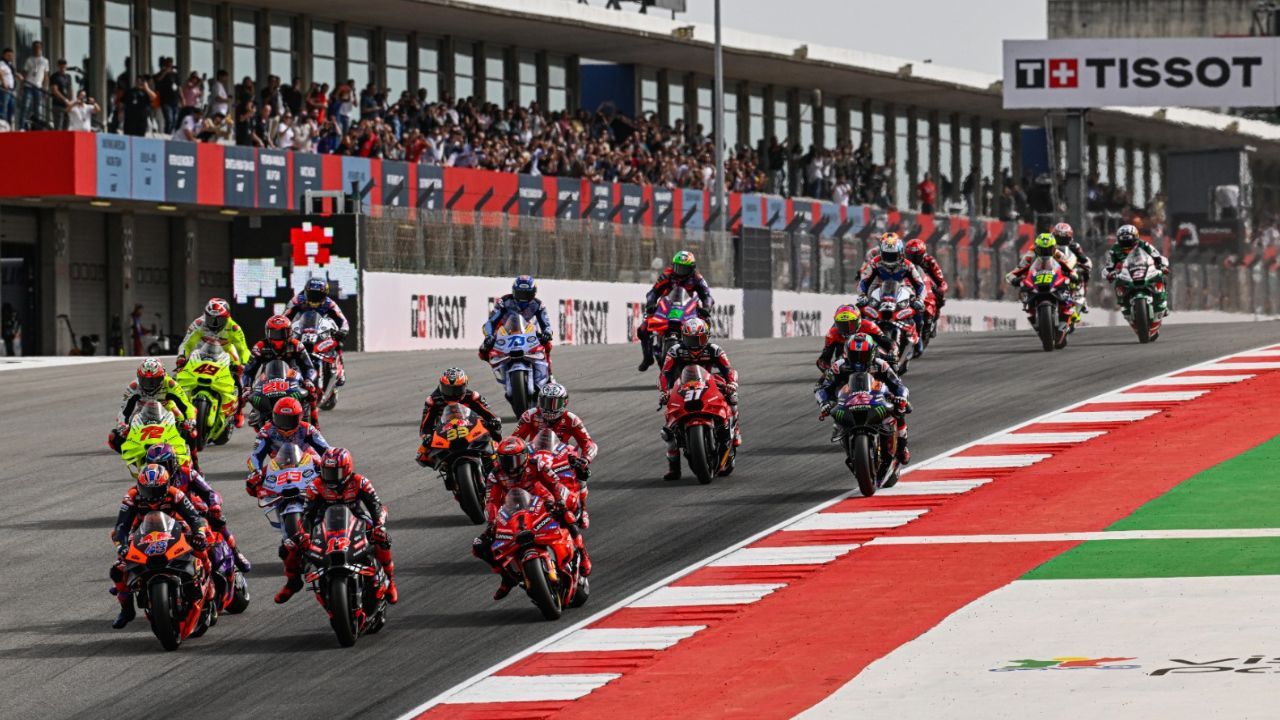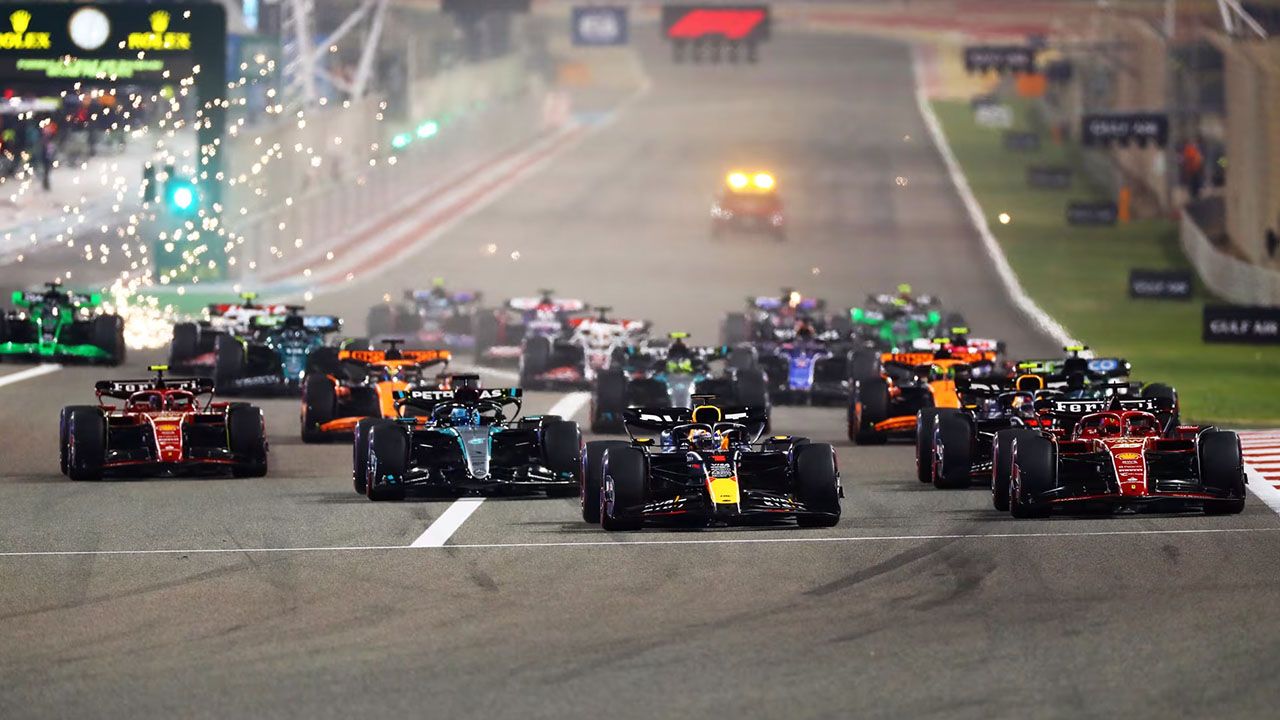
On April 1st, the world of motorsports was rocked with a seismic announcement – Liberty Media, US-based owner of Formula One, confirmed the acquisition of MotoGP’s parent company, Dorna Motorsports. What this means is that the world’s premier four-wheel and two-wheel racing categories will soon come under the same umbrella. Surely, they could have chosen a better day and date to make an announcement like that, although it seems nobody is fooling around. This is serious business!
The deal between the two firms, valued at around $4.5 billion, sees Liberty Media acquiring an 86% stake in Dorna’s business, while the remaining 14% will remain with the Spanish firm. While the acquisition awaits approval from anti-trust / competition authorities and foreign investment boards in various jurisdictions, Liberty Media is confident about finalising the deal by the end of 2024. Additionally, Liberty Media has confirmed that Dorna will continue to run as an independent firm despite coming under its ownership. Carmelo Ezpeleta, the current CEO at Dorna, will remain at the helm of the business, and it will continue to be based in Madrid.
There’s no denying that MotoGP is headed for a big shake-up once Liberty Media completes the takeover. There are, of course, a lot of expectations, as well as apprehensions, regarding the future trajectory of what is the pinnacle of two-wheel racing.
Is it the right decision? What will MotoGP gain or lose in the long term after Liberty Media takes control? We decided to hazard a guess based on the information available to us.
More Profit, More Exposure
While we don’t quite have a magic ball to predict the future, a couple of things are quite evident when you look at Liberty Media’s past track records, especially after they acquired F1 in 2016. Nobody can deny that F1 is in much better shape than it was seven years ago – whether it’s commercials, digital presence, television viewership, or audiences trackside, the sport has grown leaps and bounds under Liberty Media’s ownership in all aspects.
One of the key changes instituted by Liberty Media in F1 was the introduction of a cost cap for all teams in 2021. This measure aimed to curtail exorbitant spending by big teams, such as Red Bull, Mercedes, and Ferrari, from spending oblivion amounts of money towards developing their cars and racing operations, thereby (in theory) closing the performance gap between teams and fostering a level playing field for all participants. Remarkably, the cost cap has not only made F1 teams profitable but has also increased their valuation – even the tail-ender teams are valued at around a billion dollars at present, which is an extraordinary evolution, considering that they were nowhere close to that figure a decade ago.
If the new owners can manage to do something similar with MotoGP, it will make the sport more lucrative for investors. As for the budget cap, while it didn’t quite achieve the desired parity in F1 as Liberty Media had envisioned, its implementation in MotoGP, where performance gaps among manufacturers aren’t as wide as they are in F1, could yield positive results. This could also mean restricted development in the aero department – the current bugbear for the ‘show’ aspect of MotoGP – in the near future.
Liberty’s biggest contribution to F1, however, is its meticulous marketing, which has helped it draw new audiences worldwide. Whether you credit Netflix’s bumper hit Drive to Survive docuseries or F1’s newfound tactics for driving social media engagement, Liberty Media has elevated it from a cars-going-around-fast-in-a-circle sport to an appealing race-themed soap opera, replete with compelling narratives and charismatic characters, which include not just drivers but also team principals. No wonder, then, that F1 has been thriving like never before. Not to mention, it continues to attract scores of new and young fans each passing year.
Now, while MotoGP is already the most popular two-wheel motorsports championship, there’s no denying that it doesn’t quite have an F1-like bandwidth or reach among fans globally. However, MotoGP is, arguably, a better spectacle than F1 in terms of outright ‘racing’, so if Liberty Media can sell it to the right audience, using their tried-and-tested F1 approach, it can do wonders for the owners and can significantly enhance the sport’s global profile and popularity.
The Potential Pitfalls…
From a business and growth perspective, this change in ownership comes across as a much-needed shot in the arm for MotoGP. However, there are a few concerns, obviously. You see, Liberty Media has long been criticised for its perceived ‘Americanisation’ of F1. There are more races in the US than ever before. Instead of just one race at COTA (Texas) previously, the country now hosts two more at make-shift street circuits in Las Vegas and Miami. This makes it more of a showbiz affair than racing.
At the same time, F1’s presence in Asia has reduced substantially – there are limited races in the region with China just making it back on the calendar, while Malaysia is yet to make a comeback. And so far, we haven’t seen F1 showing any real interest in returning to India either. Should Liberty Media prioritise expanding MotoGP’s presence in the US (currently there’s just one round at COTA) at the expense of any of the Southeast Asian rounds, namely India, Thailand, Malaysia, and Indonesia, it could jeopardise the sport's standing in these regions – something that MotoGP cannot afford, for these markets account for a lion’s share in global two-wheeler sales and, therefore, are critical to the global motorcycle industry.
Of course, it’s all speculation based on past events. However, we can’t deny that all of us are curious to see if Liberty Media manages to change MotoGP’s fortunes – like it did with F1 – without changing its essence.
So far, the pros of it outweigh the cons – at least, on paper. Let’s hope and pray that MotoGP’s cherished traditions and unique character remain intact when the deal finally materialises.
























Write your Comment